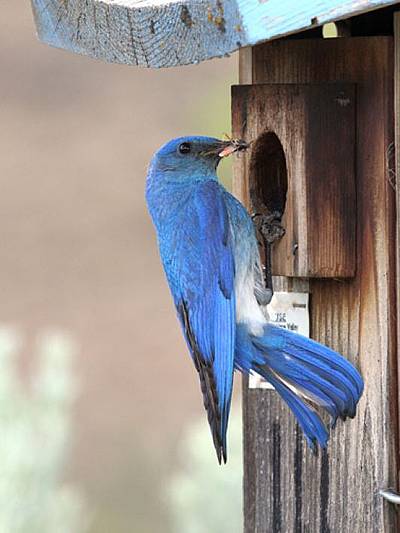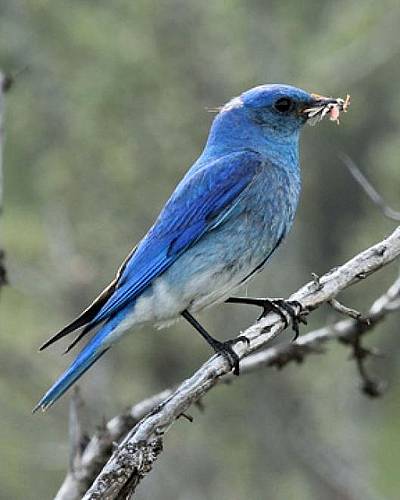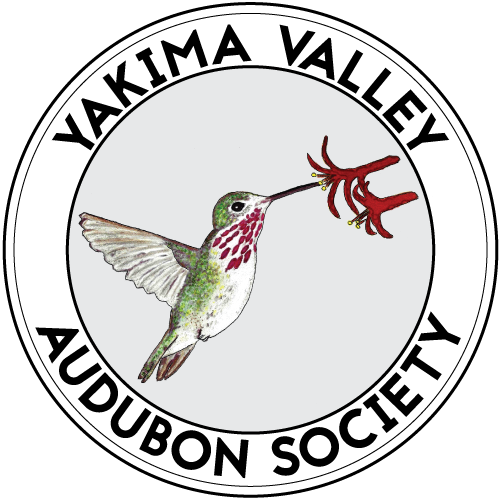Vredenburgh Bluebird Nest Box Trail has successful 2017!
General ·As the human population and activities (habitat alteration & destruction) in North America expanded, bluebird populations plummeted due to the resulting shortage of natural cavities for nesting, pesticide use and perhaps most importantly, by importing two European species of birds to North America, the House Sparrow and the European Starling.

Between 1850 and the late 1870s, House Sparrows were brought over by well-meaning immigrants partly because they believed the introduction would help curb pests around farms and partly because they were a familiar reminder of the “homeland”.
By the 1880s, the introduction was deemed a mistake as evidence mounted that native bird populations were being displaced. The first House Sparrows reached eastern Washington in the early 1900s. W. L. Dawson, an early ornithologist, wrote in his 1903 book:
The Birds of Ohio: “Without question the most deplorable event in the history of American ornithology was the introduction of the English Sparrow.
The current population of House Sparrows in North America is just under 100 million birds. A total of one hundred Starlings were introduced in New York City’s Central Park in 1890 and 1891 by a society dedicated to bringing all the birds mentioned in Shakespeare to the new world. By 1950 starlings could be found coast to coast, north past Hudson Bay and south into Mexico.
Their North American numbers today top 200 million. Starlings and House Sparrows are fierce competitors for nest cavities and often force bluebirds and other native species away from possible nesting sites.
Scientists and citizens became concerned as bluebird populations plummeted across North America. Looking for ways to help, it was soon discovered that bluebirds would readily accept man-made nest boxes. And by limiting the size of the entrance hole, Starlings (but not House Sparrows) could be blocked. House Sparrows shadow humans; by placing nest boxes away from homes, threats from HOSP decrease.
To counter declining populations, bluebird trails became popular and are a source of great pleasure and satisfaction to those involved. A bluebird trail consists of a number of nesting boxes spaced approximately 100 yards or more apart and so located that they can be conveniently monitored by going from box to box by car, bicycle or on foot.
A bluebird trail may consist of only a few nesting boxes on one’s own property or of hundreds of boxes spread over a distance of many miles. Bluebird population has increased dramatically along the routes of virtually all bluebird trails in appropriate habitat that have been operated for a number of years.
In 1982, YVAS members put up 57 nest boxes in the Wenas area. The trail was expanded over the years and now has 132 nest boxes along a 14 mile stretch of North Wenas Road between Audubon Road and Durr Road. In 1994, the trail was named in honor of Virginia and Harold Vredenburgh to recognize their years of tireless devotion to help bluebirds flourish in Yakima County. YVAS members continue to monitor the boxes weekly throughout each breeding season. Sponsorship of individual boxes has been a hallmark of the trail since its inception.
This year, a total of 491 bluebirds fledged from the Vredenburgh nest boxes, slightly better than the average fledge rate of 478 from the most recent ten years. Mountain Bluebirds accounted for 63 of the total which was down slightly from last year’s 82.
Also fledging from the boxes this year were seven Mountain Chickadees and four Tree Swallows. A clutch of five White-breasted Nuthatches failed just days prior to fledging.
In addition to the Vredenburgh Bluebird Trail, YVAS members tend to five other bluebird trails in the Yakima area.
Recaps, history and photos from these trails can be found on the online version of the YVAS Newsletter, the Calliope Crier: October 2017 Calliope Crier
-Richard Repp

